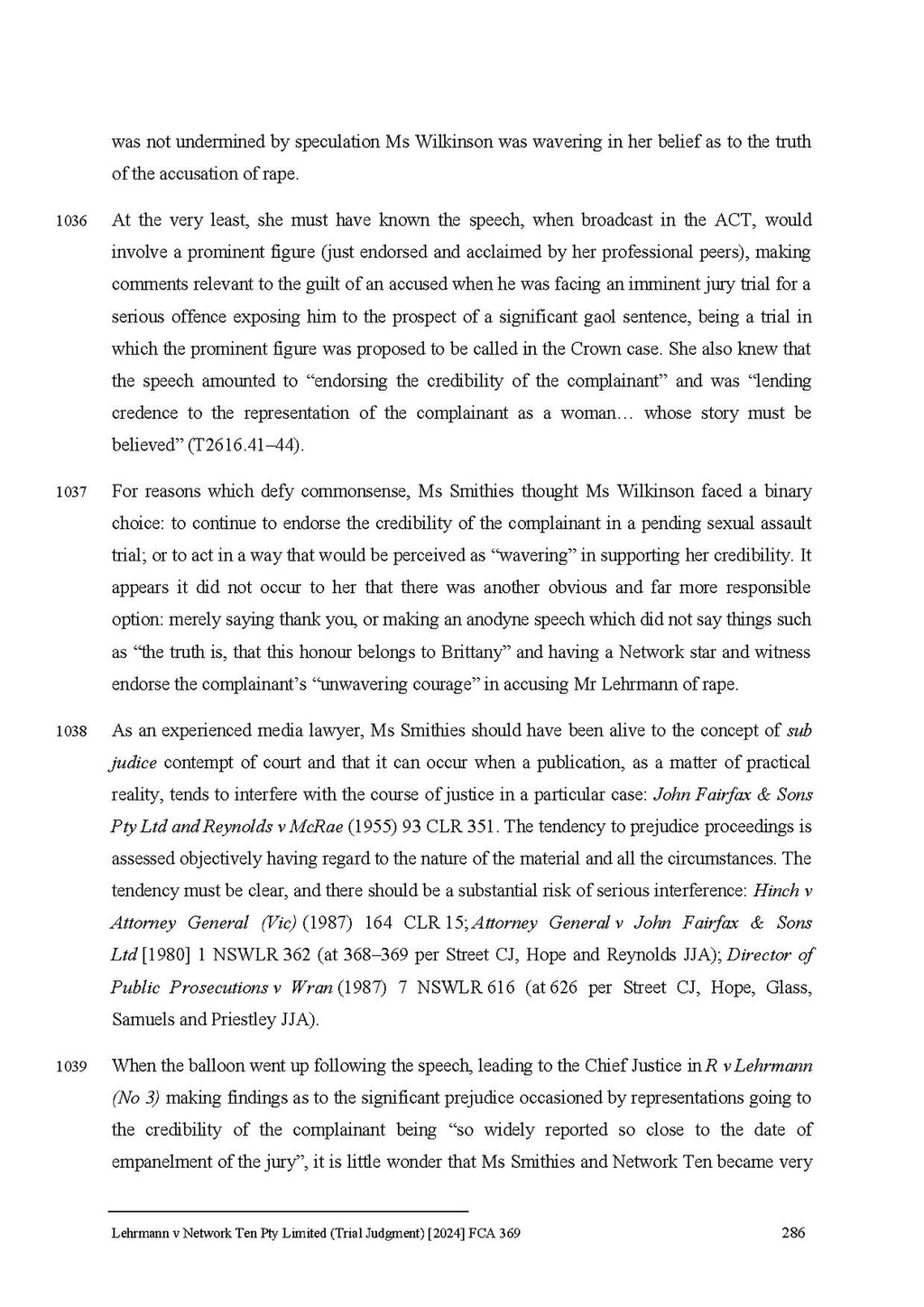was not undermined by speculation Ms Wilkinson was wavering in her belief as to the truth of the accusation of rape.
1036 At the very least, she must have known the speech, when broadcast in the ACT, would involve a prominent figure (just endorsed and acclaimed by her professional peers), making comments relevant to the guilt of an accused when he was facing an imminent jury trial for a serious offence exposing him to the prospect of a significant gaol sentence, being a trial in which the prominent figure was proposed to be called in the Crown case. She also knew that the speech amounted to "endorsing the credibility of the complainant" and was "lending credence to the representation of the complainant as a woman… whose story must be believed" (T2616.41–44).
1037 For reasons which defy commonsense, Ms Smithies thought Ms Wilkinson faced a binary choice: to continue to endorse the credibility of the complainant in a pending sexual assault trial; or to act in a way that would be perceived as "wavering" in supporting her credibility. It appears it did not occur to her that there was another obvious and far more responsible option: merely saying thank you, or making an anodyne speech which did not say things such as "the truth is, that this honour belongs to Brittany" and having a Network star and witness endorse the complainant's "unwavering courage" in accusing Mr Lehrmann of rape.
1038 As an experienced media lawyer, Ms Smithies should have been alive to the concept of sub judice contempt of court and that it can occur when a publication, as a matter of practical reality, tends to interfere with the course of justice in a particular case: John Fairfax & Sons Pty Ltd and Reynolds v McRae (1955) 93 CLR 351. The tendency to prejudice proceedings is assessed objectively having regard to the nature of the material and all the circumstances. The tendency must be clear, and there should be a substantial risk of serious interference: Hinch v Attorney General (Vic) (1987) 164 CLR 15; Attorney General v John Fairfax & Sons Ltd [1980] 1 NSWLR 362 (at 368–369 per Street CJ, Hope and Reynolds JJA); Director of Public Prosecutions v Wran (1987) 7 NSWLR 616 (at 626 per Street CJ, Hope, Glass, Samuels and Priestley JJA).
1039 When the balloon went up following the speech, leading to the Chief Justice in R v Lehrmann (No 3) making findings as to the significant prejudice occasioned by representations going to the credibility of the complainant being "so widely reported so close to the date of empanelment of the jury", it is little wonder that Ms Smithies and Network Ten became very
